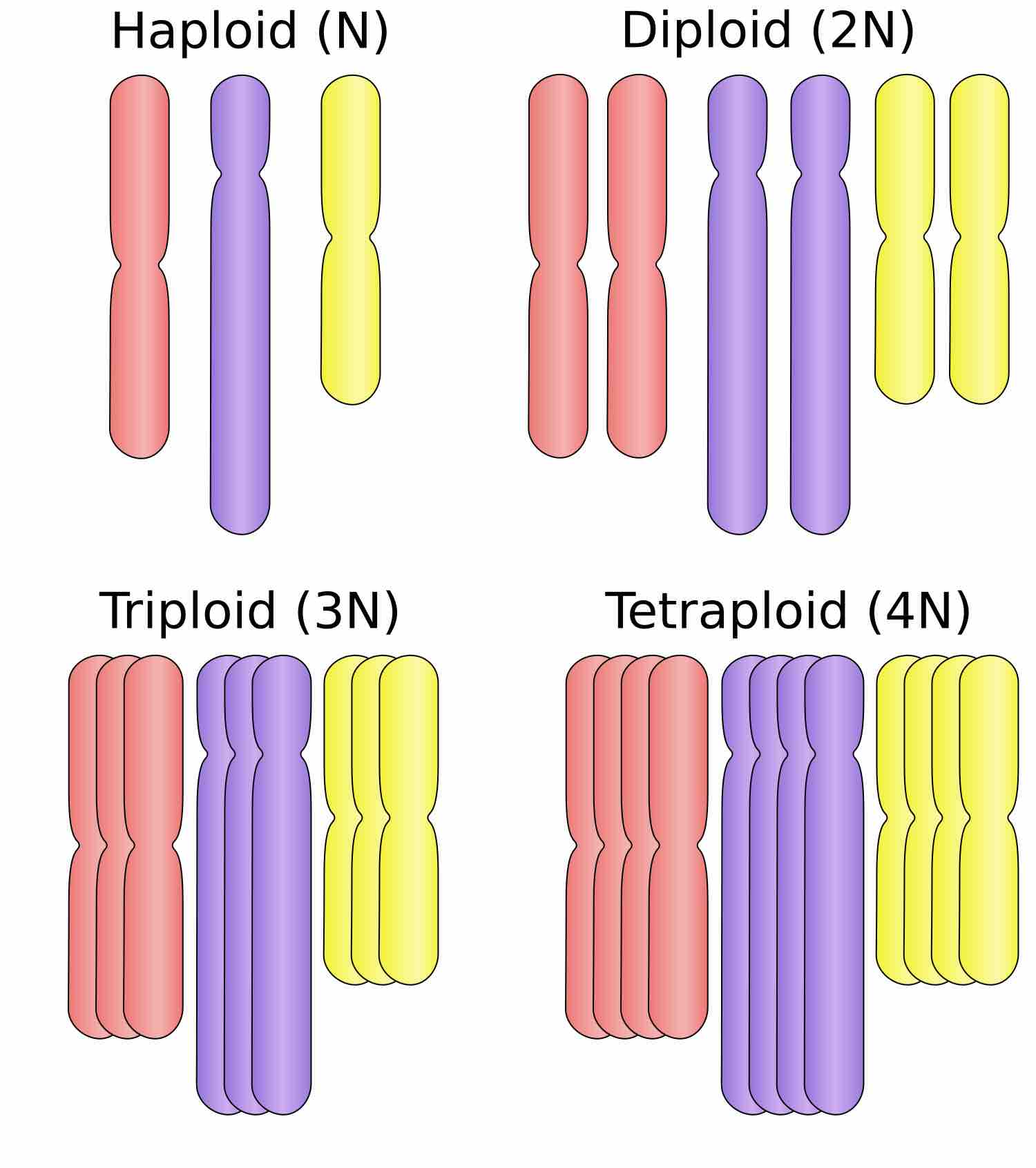Whole-Genome Duplication
Gene duplication is the process by which a region of DNA coding for a gene creates additional copies of the gene. Similar to gene duplication, whole-genome duplication is the process by which an organism's entire genetic information is copied, once or multiple times, which is known as polyploidy . This may provide an evolutionary benefit to the organism by supplying it with multiple copies of a gene, thus, creating a greater possibility of functional and selectively favored genes.

Polyploidy
This image shows haploid (single), diploid (double), triploid (triple), and tetraploid (quadruple) sets of chromosomes. Triploid and tetraploid chromosomes are examples of polyploidy.
Evolutionary importance
Paleopolyploidization events lead to massive cellular changes, including doubling of the genetic material, changes in gene expression and increased cell size. Gene loss during diploidization is not completely random, but heavily selected. Genes from large gene families are duplicated. On the other hand, individual genes are not duplicated. Overall, paleopolyploidy can have both short-term and long-term evolutionary effects on an organism's fitness in the natural environment.
Genome diversity
Genome doubling provides organisms with redundant alleles that can evolve freely with little selection pressure. The duplicated genes can undergo neofunctionalization or subfunctionalization which could help the organism adapt to the new environment or survive different stress conditions.
Speciation
Sympatric speciation can begin with a chromosomal error during meiosis or the formation of a hybrid individual with too many chromosomes, such as polyploidy which can occur during whole-genome duplication. Scientists have identified types of polyploidy that can lead to reproductive isolation of an individual in the polyploid state. In some cases a polyploid individual will have two or more complete sets of chromosomes from its own species in a condition called autopolyploidy. The other form of polyploidy occurs when individuals of two different species reproduce to form a viable offspring called an allopolyploid. The prefix "allo" means "other" (recall from allopatric); therefore, an allopolyploid occurs when gametes from two different species combine.
It has been suggested that many polyploidization events created new species, via a gain of adaptive traits, or by sexual incompatibility with their diploid counterparts. An example would be the recent speciation of allopolyploid Spartina — S. anglica; the polyploid plant is so successful that it is listed as an invasive species in many regions.
Evidence of Whole-Genome Duplication
In 1997, Wolfe & Shields gave evidence for an ancient duplication of the Saccharomyces cerevisiae (Yeast) genome. It was initially noted that this yeast genome contained many individual gene duplications. Wolfe & Shields hypothesized that this was actually the result of an entire genome duplication in the yeast's distant evolutionary history. They found 32 pairs of homologous chromosomal regions, accounting for over half of the yeast's genome. They also noted that although homologs were present, they were often located on different chromosomes. Based on these observations, they determined that Saccharomyces cerevisiae underwent a whole-genome duplication soon after its evolutionary split from Kluyveromyces, a genus of ascomycetous yeasts. Over time, many of the duplicate genes were deleted and rendered non-functional. A number of chromosomal rearrangements broke the original duplicate chromosomes into the current manifestation of homologous chromosomal regions.